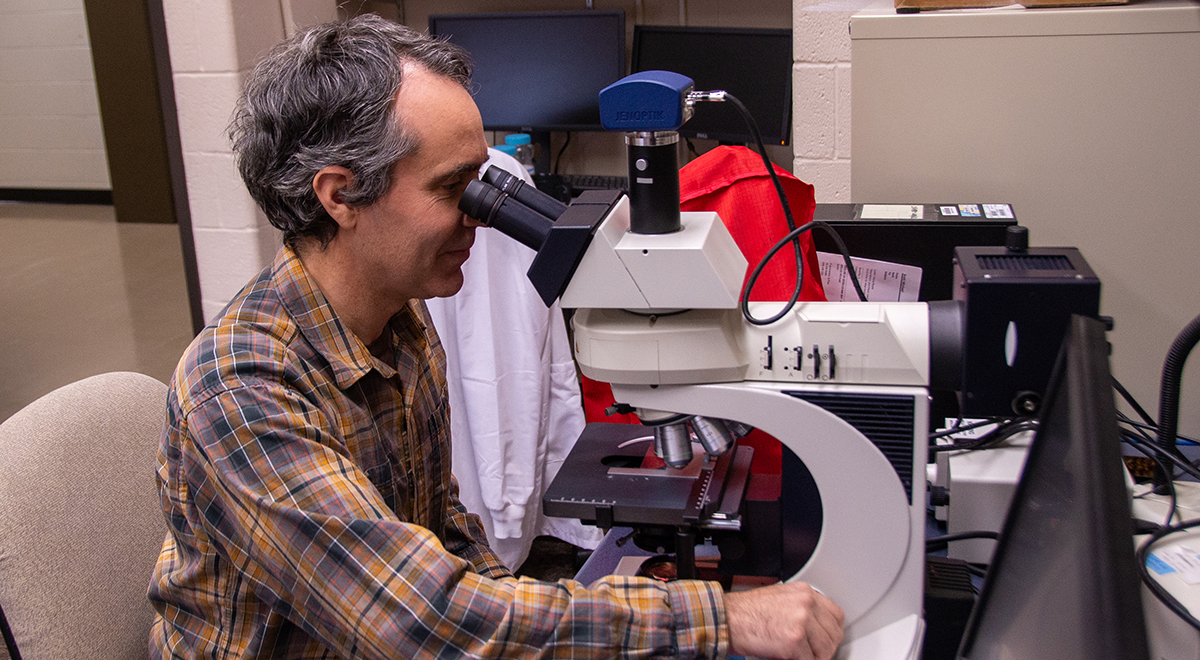Wesleyan Professor Charts Atmospheric CO2 Back 66 Million Years

The Earth’s present-day atmosphere has a carbon concentration that’s 50 percent higher than it was before industrialization, a rapid escalation that is a contributing factor to widespread climate changes, according to experts across the field of paleoclimatology.
To further understand the potential effects of climate change and other important aspect of Earth’s climate history, Dana Royer, George I. Seney Professor of Geology in the Department of Earth and Environmental Sciences, and over 80 other paleoclimatologists published a comprehensive charting of 66 million years of atmospheric CO2 data. Their seven-year effort, dubbed the Cenozoic Carbon Dioxide Proxy Integration Project (CenCO2PIP), was featured in the premier scientific journal Science on Dec. 8. The group has published its research and accompanying charts on its website.
CenCO2PIP began as an individual effort in Royer’s personal research—he tracked and cross-referenced published paleo-CO2 data with his own publications for decades. Then lead co-author Bärbel Hönisch, professor of earth and environmental studies at Columbia University, approached Royer about building a consortium of researchers across the landscape of the paleo-CO2 field to improve the efficacy and breadth of data. After years of research, collection of data, and data validation, the collective was ready to publish its findings.
“This community-vetted CO2 synthesis represents the most reliable data available to date and a means to improve our understanding of past changes in global climate and carbon cycling as well as organismal evolution,” the paper says.
Researchers had to use geological proxies, like measuring the pores of certain plants and plant fossils, to track CO2 levels since there is no direct way to measure atmospheric composition, Royer said. This coalition is comprised of experts in research using several different proxies to further validate its data.
“Understanding a planetary response is complicated because you can’t do a replicated experiment like you can do in a lab,” Royer said. “Earth’s history that gives you the closest planetary version of replication. You can go back into periods of Earth’s history and study those periods to help shine some light on how the Earth works when it was in a different climate state.”
Royer researches one proxy—the pores of fossilized plants. Plants take in carbon dioxide to produce sugar, their food source, so the density and size of their pores correlate with the amount of carbon dioxide in the atmosphere.
“With a microscope we can see these structures and, in fact, we can see them in many fossil leaves, which is pretty amazing,” Royer said. “Going back all the way to the origins of land plants 400 million years ago, you can see these stomatal structures.”
This paper is unique for its consensus—Royer said it’s rare that so many professionals in the same field sign up to contribute findings of this scale.
From here, the coalition leaders are starting on a new project funded by the National Science Foundation to further validate the CenCO2PIP reported data, improve the quality of data it had to omit from the report, and continue to validate data further back past the 66-million-year mark, Royer said.

